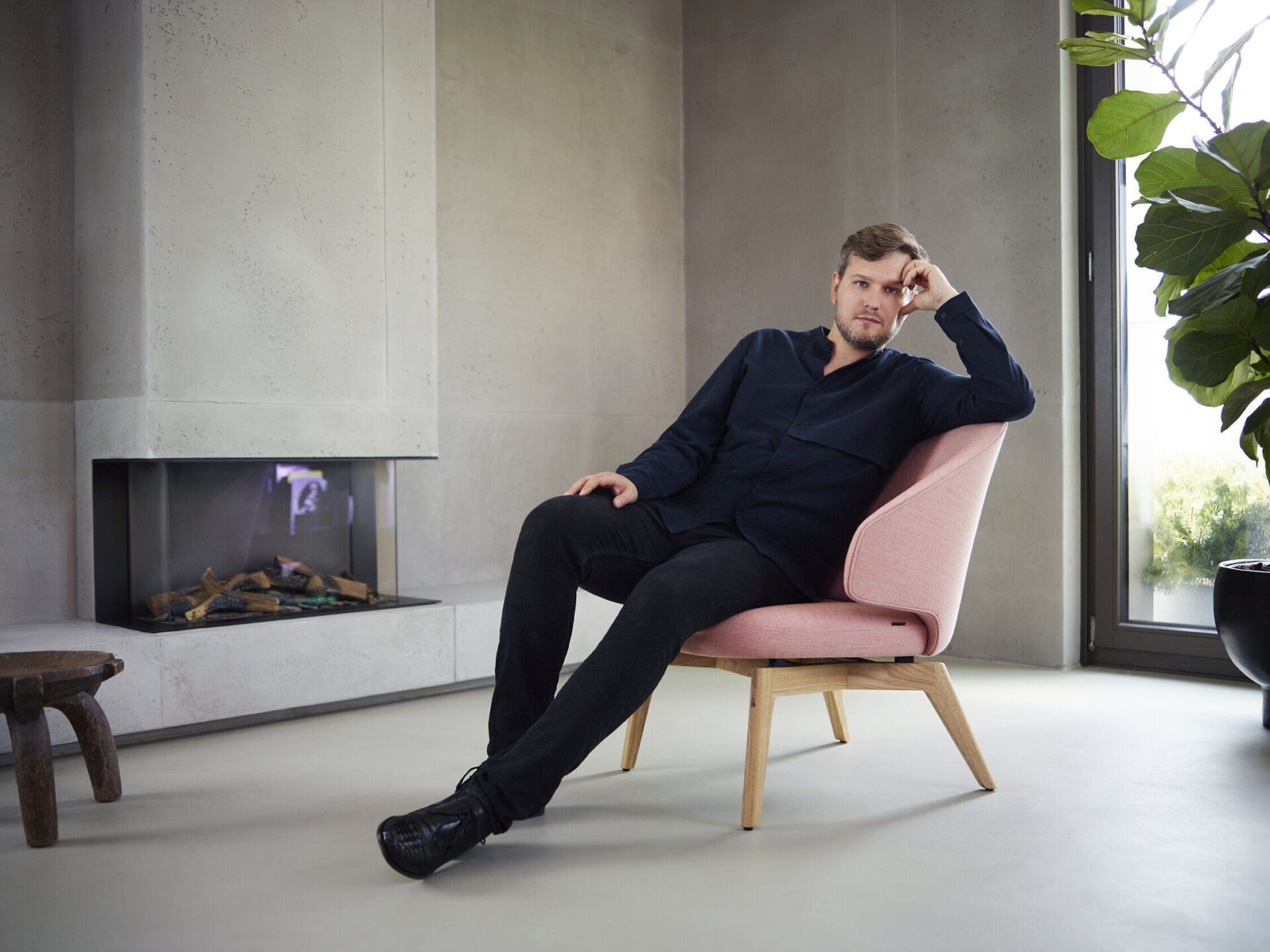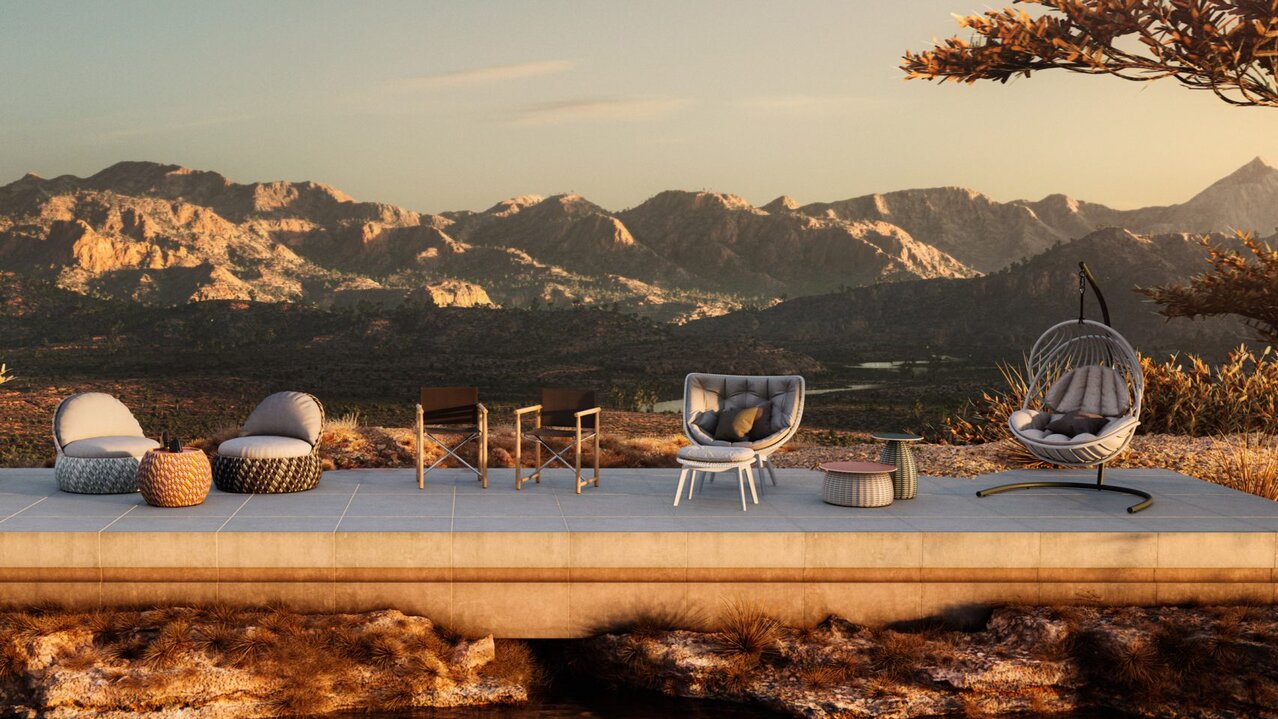Sticking to your principles, from zero to hero
KEY TAKEAWAY:
Building a studio to pursue an unorthodox design approach may be difficult to start with but it pays off: German industrial designer Sebastian Herkner explains why, and how he coped when no-one noticed him

Industrial designer Sebastian Herkner is a perfect fit for contemporary, climate-change conscious times: he is passionate about revamping crafts but doesn’t disdain technologies, he is an expert on materials, devoted to sustainability, local production and durability. And, cherry on the top, he runs a studio-workshop in the German town of Offenbach rather than a big design destination.
Needless saying, when he started, in 2006, all these choices made him sound almost like a weirdo.
Back then, the design community was totally focused on digital technologies, new plastics, and global manufacturing processes.
While cities where thriving on gentrification and industrial looks, he was alone in Offenbach, building glass and brass tables, creating hand-made furniture to display in wooden boxes and positioning souvenirs in transparent domes.
“It was difficult for me to communicate and people actually laughed at some things I was saying”, he recalls.

Sixteen years and many awards and recognitions later, Sebastian is very sought after, his studio has eight collaborators coming from all over the world, he works for many leading brands (see it all here). And, yes, he is still in Offenbach and still believing in the same values that drove him at the start. But now everyone understands them.
The way an industrial designer makes it from zero to hero is certainly a matter of talent, strategy and opportunity. But, Sebastian thinks, in his case it also had a lot to do with sticking to his own principles, despite adversities.
Sebastian, how much did your devotion to crafts + sustainability matter in making it as an industrial designer?
Sebastian Herkner:
“I think quite a lot. Because as a designer (but also as a human being) you need to feel comfortable with what you do, but also with how you do it and especially why you do it. If you feel strongly about something, and you believe it’s relevant not only to you but also to the world we live in, you will give 100% and your work will become relevant too.
And, as such, it will get noticed, sooner or later”.

Do you mean recognition will come by itself?
Sebastian Herkner:
“No. You need to work on it. But it’s an honest, personal approach and work to show for it are a necessary start.
The challenge, then, is to have a strong story that explains your standpoint and make it clear to your audience, so they feel it with you and become thinking partners rather than just clients.
This is something I understood when, as a student, I did an internship at Stella McCartney in London and saw how big, meaningful ideas – like the ones she had on fashion and sustainability – get the credit they deserve sooner or later. It was extremely motivating”.
How did you find ways to survive when companies didn’t seem to notice you?
Sebastian Herkner:
“When you start, the trick is called hard work. Coupled with patience and costs control.
My parents supported me while I was studying, and I had a job in a fashion shop to contribute to costs. I opened my studio in 2006, before graduating in 2007. I had no design projects to support it, so I carried on with the fashion shop and got a post as a teaching assistant at the University Offenbach and then as a teacher.
I would invest half of my earnings in prototypes and materials for the studio and on attending all possible young designers’ shows: the Salone Satellite in Milan (three times) and others.
I didn’t go on holiday for 10 years because I could not afford it, but I loved what I did so much that it didn’t really matter.

A key point was also location. In Offenbach, life costs are manageable.
My advice to young people – especially today, when it’s even easier to work remotely – is to forget about big cities and select a place where you can live comfortably. No-one can be creative if they have to struggle”.
How much does a designer need to compromise when working for a commercial brand?
Sebastian Herkner:
“When it comes to ethical issues, no compromises should be made: that’s my standing and has always been, even when I had very little work.
If you want to be taken seriously you must be the first one to do so yourself.
When you have just opened your studio, it’s easy to be tempted to take on a job even if you are not totally convinced that the company’s values are in line with your own (and with “values” I mean behaviors, not mere words).
But before linking your name to a brand, it’s important to see what’s really behind the scenes because you don’t want to lose your value for money.
So you should get to know the managers but above all the craftsmen.
Seeing how they work is vital for the quality of the deliverables but also to gauge how serious the company is about social responsibility. This is particularly important when production is in Asia. I have no issue with productions over there, but the situation needs to be in line with my principles. My clients Dedon or Wendelbo have their own facilities there which are stunning.

For instance, I can say that I know for sure that 95% of my design is produced in human conditions (for the remaining 5% I cannot say because I have not yet seen things personally but I will).”
What should designers look for in a company when it comes to sustainability?
Sebastian Herkner:
“I always focus on the way they produce and use materials. How much do they actually do themselves or through local suppliers? Why do they outsource and where? Is it to get higher quality or to lower costs?
Also, I am not against the use of plastics but I am not happy to use it when it can be replaced with other materials: for instance when you design an indoor piece of furniture it makes no sense, while for outdoors it’s a whole different issue. So what’s the company’s stand on plastic?
Read also: An industrial designer’s unexpected view on plastic
There is a lot a designer can figure out by talking with technical offices.
For instance: does the company truly tries to make the best possible product so that it’s long lasting or do they go cheap on the binding elements so that it will die sooner? Do they have a service in place to look after clients’ request in case they need to repair it?
A key point is related to the managerial structure. When issues related to sustainability are under the marketing umbrella the risk of greenwashing is just behind the corner.
Brands that are serious about this have a Sustainability Officer with a dedicated task.
I also check out who is behind the company.
Digital brands that only sell online most of the time are not interested in the service and they are run by investors who look for a 15% return after a year so they only want to sell and run away. That’s not for me. And it should not be for any designer who is interested in sustainability. Design should no longer be considered a consumption good”.
Your focus is on crafts and materials. What fascinates you about them?
Sebastian Herkner:
“The fact that materials, and crafts are defining elements in the identity of a place and its people: they are telltales of human qualities but also have a key role in the economic sustainability of societies.
When leather production moved away from Offenbach, I could feel the change: jobs were gone and, with them, the city’s identity and personality. Which is why, in some areas, safeguarding crafts is a major social issue.

This was perhaps considered a minor issue 10 years ago but now everyone sees it. And the pandemic made the contradictions of global production even more apparent”.
How does a designer come to develop his own focus?
Sebastian Herkner:
“I think it stems from who you are, with your identity. In my case, making things with my hands is part of my life since I was a kid: my father is an electrician and I learnt to repair things in his workshop; and Offenbach was known for its leather production: it used to be a makers’ place.
When I started University, workshops in ceramics, leather, wood were offered as part of the curriculum then some of the labs were closed to focus on AI, digital technologies and the like. I felt this was wrong.
I decided to use my work as a designer to show the world that crafts still had a great value and relevance.
Especially if you manage to give them a contemporary twist and include technology in the picture”.
Why do you think your design approach is so highly appreciated now?
Sebastian Herkner:
“When I started doing a slow kind of design – focused on natural materials, local craftsmanship, ethical production and sustainable values – design and manufacturing were going somewhere else.
The big talks were on digital production, outsourcing, international investments and retailing.
Then there was a financial crisis, global capitalism was being questioned and, with it, the concepts of planned obsolescence and over-production.
Suddenly what I was doing made more sense. And it does even more now, after a pandemic hit us and climate change consequences are there for all to see.
Another factor is that I think more companies now see design as an investment, also in terms of sustainability. So they look for designers who have a track record in this and seek their help”.
What’s your suggestion for young designers who wish to be noticed by brands?
Sebastian Herkner:
“I know a lot of young designers now look for their own direction, go artistic and give up on trying to get in touch with the industry. That’s totally fine although not easy either.
What I did, though, was different, and I believe it still works today.
- Attend students or young talents platforms (the best one is still Salone Satellite in Milan, I was there three times, but I also invested in others)
- Try to be published in relevant magazines (where industry professionals get their information: my Bell table was published on Wallpaper, early on, and although it took three years to have a producer, it made a difference in the company’s eyes)
- Be present on social media with compelling and varied contents (this is key to show what you do but, more importantly, how you do it and what sort of person you are).
- Do all these things constantly (one-offs are not working: you need to work on multiple channels and to do it all the time. As I said, I invested most of my money, time and passion in my work and that makes the difference).
Some people say you also need a bit of good luck. Probably. But perhaps what you need more is patience and motivation. And a great passion for what you do so that you don’t mind putting all those hours and efforts in.
© Cover Image – courtesy of Thonet









